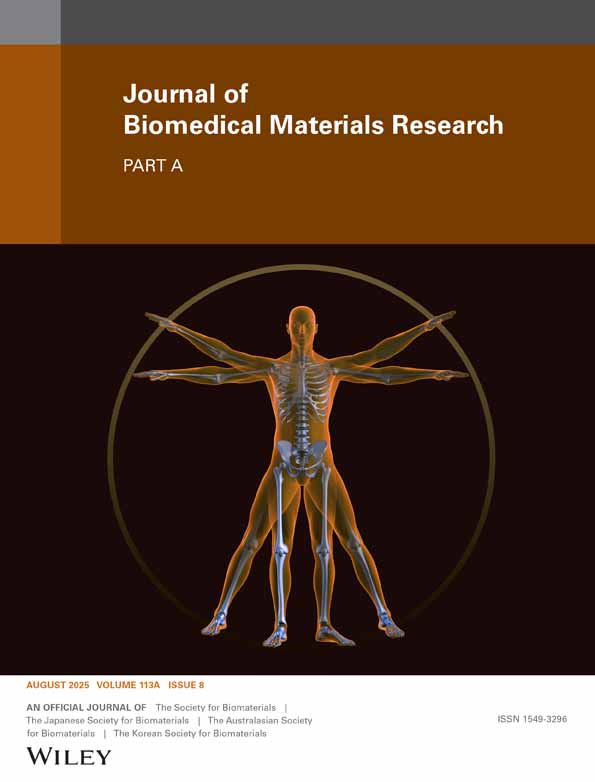Role of protein kinase C in the monocyte-derived macrophage-mediated biodegradation of polycarbonate-based polyurethanes
Abstract
Polycarbonate-polyurethanes (PCNUs) elicit a foreign body reaction during the initial tissue contact, partly mediated by the respiratory burst in monocytes, during which protein kinase C (PKC) activates NADPH (nicotinamide adenine dinucleotide phosphate) oxidase. Using an in vitro cell system, monocytes were differentiated into monocyte-derived macrophages (MDMs) and then reseeded onto three PCNUs (HDI431, HDI321, or MDI321): hexane (HDI) or 4,4′-methylene bis-phenyl (MDI) diisocyanates synthesized with poly(1,6-hexyl 1,2-ethyl carbonate) diol (PCN) and 14C-labeled butanediol (BD) in the ratios 4:3:1 or 3:2:1 (diisocyanate/PCN/BD). MDM-mediated degradation was assessed by radiolabel release in the presence of a PKC activator (phorbol myristate acetate), inhibitor (H7), and a catalase/peroxidase inhibitor (NaN3). Activating PKC decreased biodegradation and esterase activity in MDMs on HDI431 and HDI321 but not MDI321, whereas H7 and NaN3 inhibited the MDM degradation of MDI321 only. Pretreatment of the PCNUs with H2O2 inhibited esterase-mediated radiolabel release from HDI431 and HDI321 but stimulated radiolabel release from MDI321. The difference in the effect of H2O2 on the HDI versus MDI PCNUs contributes to explaining the effect of PKC activation on material degradation. Understanding the mechanism by which this pathway is linked to PCNU chemistry may assist in designing materials with tailored biodegradation rates. © 2005 Wiley Periodicals, Inc. J Biomed Mater Res, 2005




